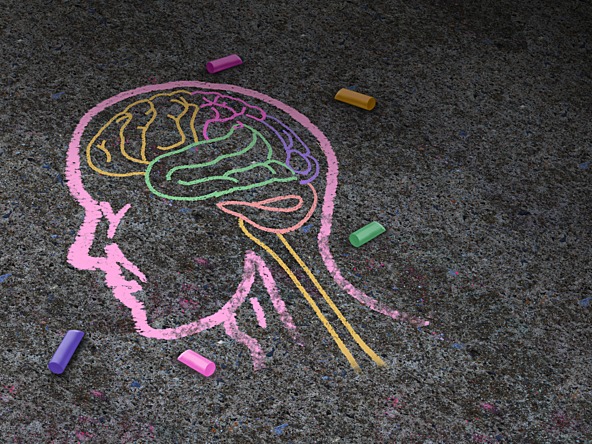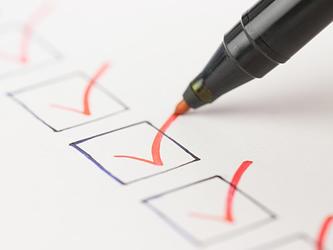Checking your expectations: Essential safeguards on neurodiversity

The latest addition to the MRS Essential Safeguards guidance suite covers conducting data activities with neurodiverse individuals. The guidance (part seven in the series) aims to help practitioners consider the needs of mild, moderate and severe neurodiverse individuals when conducting their professional activities.
What is neurodiversity?
Neurodiversity describes the idea that people experience and interact with the world around them in many different ways; there is no one "right" way of thinking, learning, and behaving, and differences are not viewed as deficits.
Many neurodivergent individuals, including those with conditions like ADHD (attention deficit hyperactivity disorder), autism, or dyslexia, may not display noticeable signs of their neurodivergence. It exists on a spectrum, from mild to severe, so some people can excel in daily life and may not identify as disabled or seek a formal diagnosis. This variability is common, affecting about one in four people.

Image caption: Neurodiversity types, spectrum conditions and where they overlap
What to keep in mind when conducting data activities with neurodiverse individuals
Keep in mind that an individual’s processing style can affect their experience in research and data collection participation, including interactions with and reactions to research and data materials, such as stimulus materials. It’s important to remember that task completion may vary for people with diverse cognitive profiles, and not all research and data tools are accessible to them.
Practitioners also need to be mindful of managing impressions and interactions. Neurodiverse participants may need a greater sense of stability and predictability, as well as more time to process questions and think through answers. Neurodiverse participants may interpret social cues uniquely, and their levels of energy and enthusiasm may differ. Practitioners need to check their social expectations, such as engagement in qualitative research discussions, be aware of biases, and avoid judging mannerisms, repetitive movements, or a lack of interest in small talk.
Designing inclusive research sessions
When designing research, practitioners should consider neurodiverse participant needs. For example:
Accessibility
- Need for multiple formats
- Clear and concise instruction – sign-post who to ask if any queries
- Assistive tools – let people use any assistive tools they would find helpful, or that they normally use for reading, etc
- Think about physical environment in face-to-face research. Is it comfortable, well-lit with no annoying noises? Consider how the session is organised and timings e.g. have some fidget toys available in group discussions for anyone to use
- Offer breaks or regular opportunities to move about – eg stand up and stretch.
Communication
- Encourage open communication and make sure everyone knows they can ask questions or for clarification if they need or want to as it will help everyone
- Use clear, concise, everyday language
- Offer written and verbal communication options and one-to-one feedback if needed
- Give enough time to think, pause and reply. Don’t try and cram too much in or keep firing questions.
Inclusivity
- Actively recruit an inclusive sample and ask what people need to be able to participate in the research comfortably
- Allow participants to self-identify
- Don’t make assumptions – contact participants beforehand to make sure you aren’t assuming what they need or can/can’t do; listen to them instead!
Plan session stimulus
During the planning phase, practitioners should ensure that any participant stimulus materials (design, mock-ups, concepts, images) are accessible. For example:
- Use accessible authoring tools to prepare content to be shared
- Any content shown should create clear expectations at all levels (including titles, links, labels, instructional text, etc)
- Reduce presentation animations and flickering
- Provide written transcripts or pictorial summaries which can be useful for people with cognitive differences, such as those who may not remember details of content previously presented.
Make participants feel comfortable
Practitioners should help orient and make users feel comfortable, by setting clear expectations from the beginning, and provide predictability during any research or data collection activities. For example:
- Go over logistics
- Provide an overview of what to expect during any discussion
- Allow for additional time to enable neurodiverse research participants to adjust to new environments.
Practitioners can also find ways to block out distractions. If practitioners conduct a virtual interview or focus group, make sure pets or family members won’t interrupt, and there are no distracting noises in the background. For in-person meetings, choose a quiet room and ask everyone to silence their mobile devices. Avoid large groups and sensory overload.
During the session
When practitioners are undertaking research and data collection activities they should:
- Avoid jargon and metaphors and spell out acronyms
- Read instructions out loud – even if written text is provided
- Speak in a direct manner, as opposed to hinting or using irony. Keep your questions short, clear and direct
- Keep tasks short
- Create interactions that allow for multiple methods to achieve the same goal. For example, if users are not comfortable expressing their opinion while talking, allow them to write it down instead
- If neurodiverse research participants get mentally or physically tired, provide breaks or offer to finish up another day.

We hope you enjoyed this article.
Research Live is published by MRS.
The Market Research Society (MRS) exists to promote and protect the research sector, showcasing how research delivers impact for businesses and government.
Members of MRS enjoy many benefits including tailoured policy guidance, discounts on training and conferences, and access to member-only content.
For example, there's an archive of winning case studies from over a decade of MRS Awards.
Find out more about the benefits of joining MRS here.













0 Comments